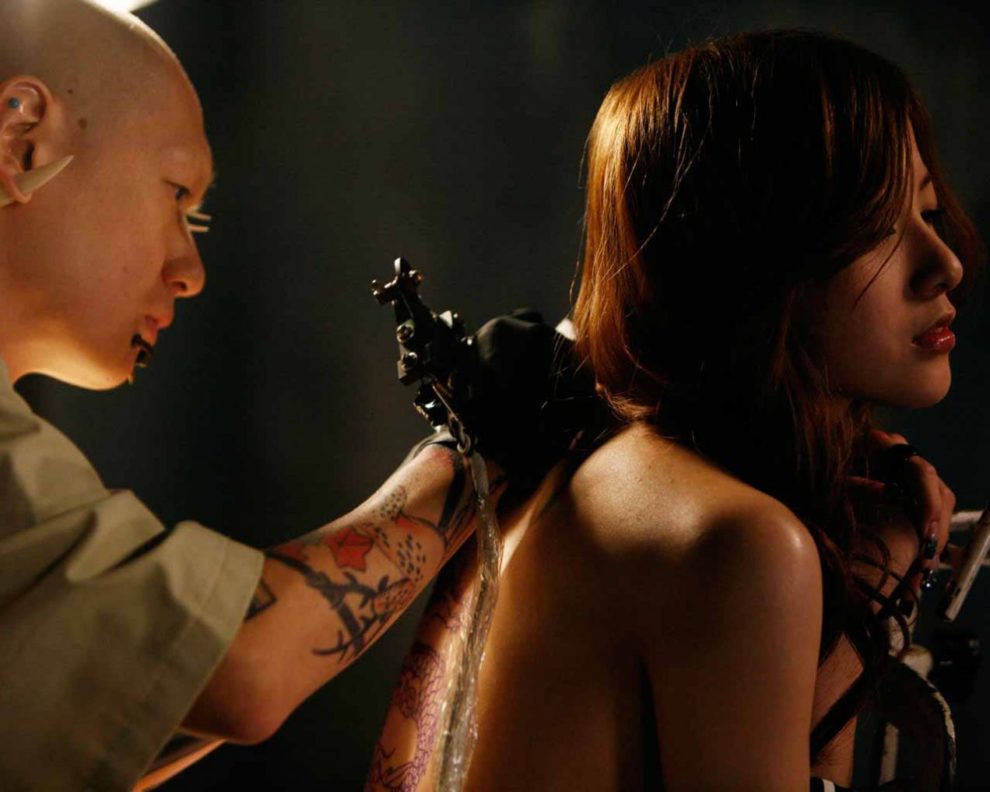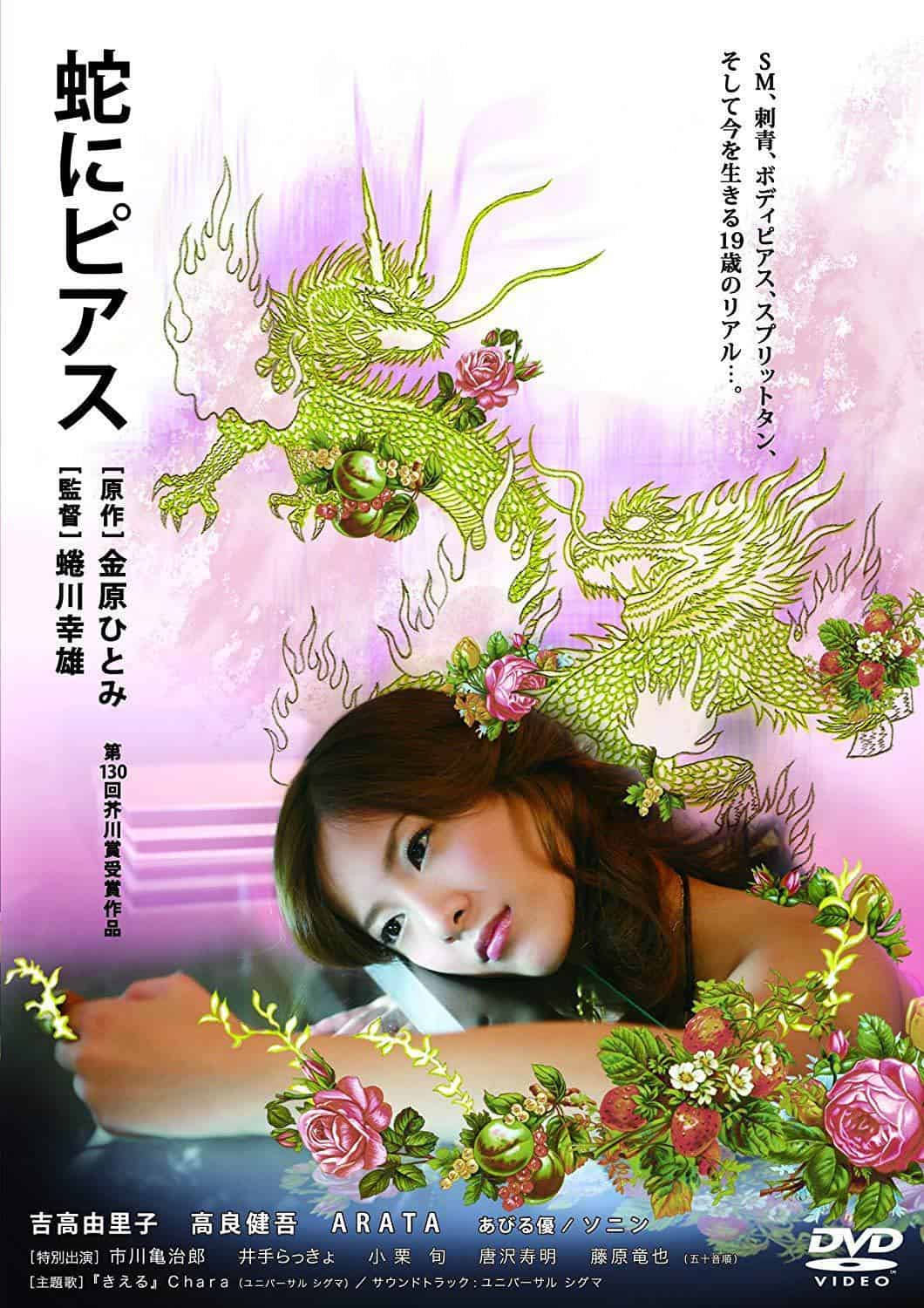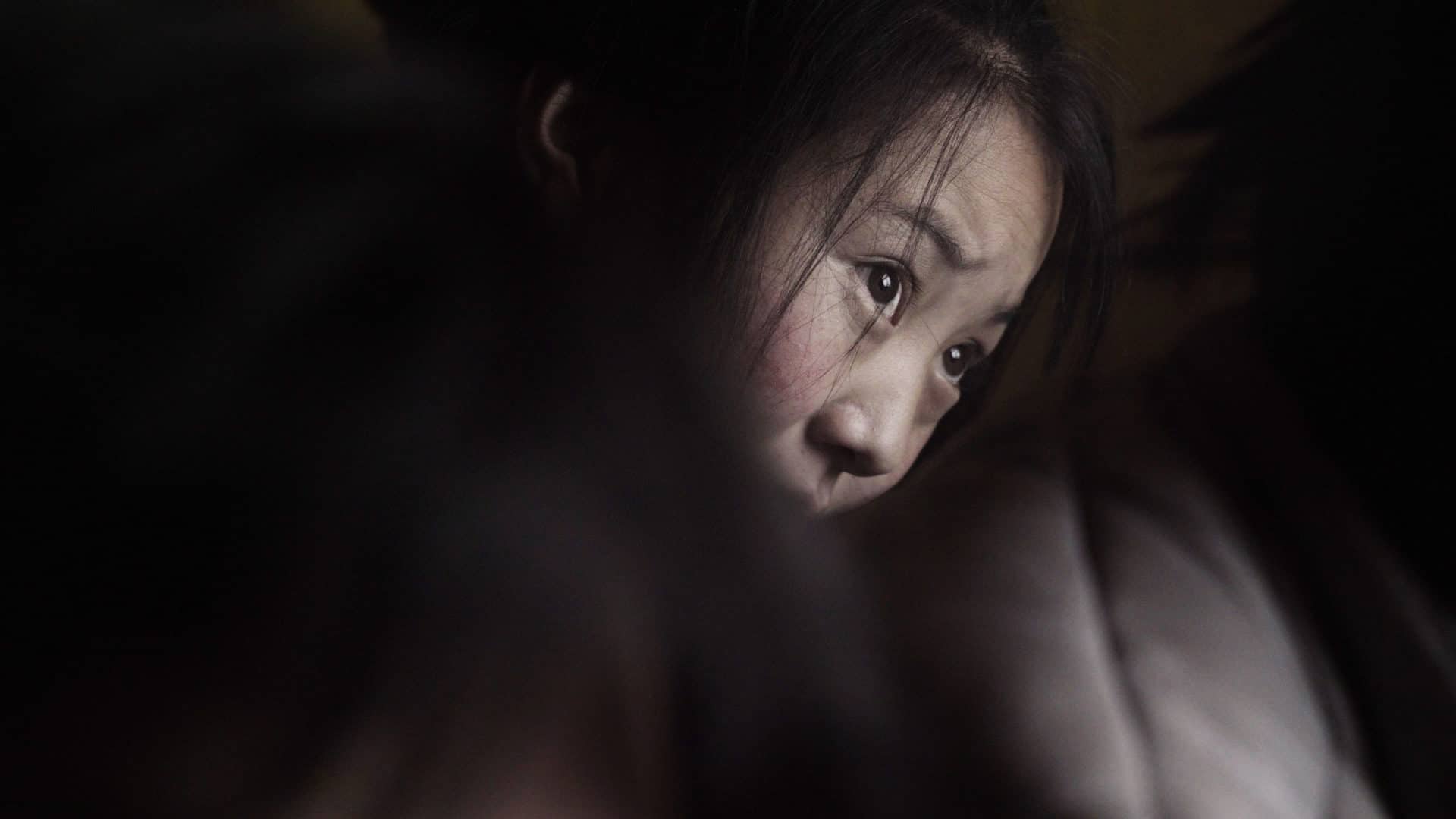Based on the homonymous novel by Hitomi Kanehara, which she wrote when she was 19 years old (just like the protagonist of the book), “Snakes and Earrings” won the Akutagawa Prize, sold more than a million copies in Japan, and has been translated into sixteen languages, before being adapted to a movie by Yukio Ninagawa.
Lui is the epitome of the trendy girl. She dresses only in designer clothes, never goes anywhere without makeup, and has a sophisticated manicure. However, as a character, she stands out from the other girls in her circle, for a number of reasons. One night, while alone in a club, she meets Ama, who is the embodiment of the Japanese punk – red mohawk, piercings all over his face, and tattoos covering his body. What attracts Lui to him, however, is his split tongue. The attraction is mutual, and they spend the night together, essentially becoming a couple from the get go.
Lui expresses a desire to have a split tongue like Ama and a tattoo on her back. For this reason, Ama introduces her to Shiba, who has done his own modifications. He pierces her tongue, gradually enlarging it and prepares a tattoo just the way she likes it. However, the second time Lui goes alone to Shiba's shop to discuss the tattoo she wants, instead of giving her a price, he suggests they have sex, and she agrees. From that moment, a peculiar love triangle forms. Although Lui loves Ama and even lives with him, she seems to enjoy sadistic sex with Shiba. Things get even more complicated when another aspect of the relationship between the two men is revealed, along with a violent incident that occurs one night when Ama is out with Lui and her friend.
Check also this article
Yukio Ninagawa directs a movie adapting the novel as closely as possible, with the visualization of the characters in particular being excellent. The presentation of the subcultures of Japanese society, and particularly how their members rarely stray away from their “tribe” is impressive, with the way Lui breaks this trend being among the focal, and most intriguing aspects of the narrative. Furthermore, the comments about love and sex and how one can exist without the other, even for long periods of time, is quite interesting, as much as the element that carries the movie for the majority of its duration.
What is also quite interesting are the differences between Ama and Shiba, with the first acting like a dog, essentially not being able to hide his desperate love for Lui, and the the second more like a cat, who demands her love, but does not seem like he needs it particularly. As such, the erotic triangle that is shaped emerges as rather captivating, with the depth of the relationships of the three adding even more to this trait. The affair that takes place, and the danger emitting from the fact that Ama has a rather dangerous temper, adds a very appealing sense of tension in the narrative, which essentially has the movie functioning like a thriller, for a large part of its duration, with the aforementioned incident also moving towards the same path.
Also of interest is the way Lui changes through these two relationships, with the way she loses control, both of her body and eventually her overall mentality, being quite impressive to watch, with Yuriko Yoshitaka's acting in that regard, particularly in the first part of the movie, being impressive. The way she changes, as much as the movie, after the midpoint, however, could have been handled a bit better, since her acting is overdramatic and takes the whole movie along with her, while the ever-present lagging of Japanese cinema is evidently here once more, unnecessarily extending the duration of the film to more than two hours.
On the other hand, Osamu Fujishi's cinematography captures the underbelly of Tokyo in a way that is both realistic and impressive, with the plethora of sex scenes actually following the same approach, and the S&M element being well-portrayed. Akimasa Kawashima's editing results in a mid-tempo that works well, although the issues mentioned do bring this aspect down.
Arata Iura as Shiba is outstanding, emitting a sense of danger from every move and word, with the same applying to an unrecognizable and quite impressive Kengo Kora, who presents the duality of his character in the most impressive fashion.
Despite some issues here and there, the combination of the presentation of the “underground” Japanese culture, the analysis of the characters, the sex and the violence, and the overall audiovisual “package” of “Snakes and Earrings” deem it an excellent film, one that is bound to be attributed the title of cult, when it will be rediscovered in a couple of years.
















